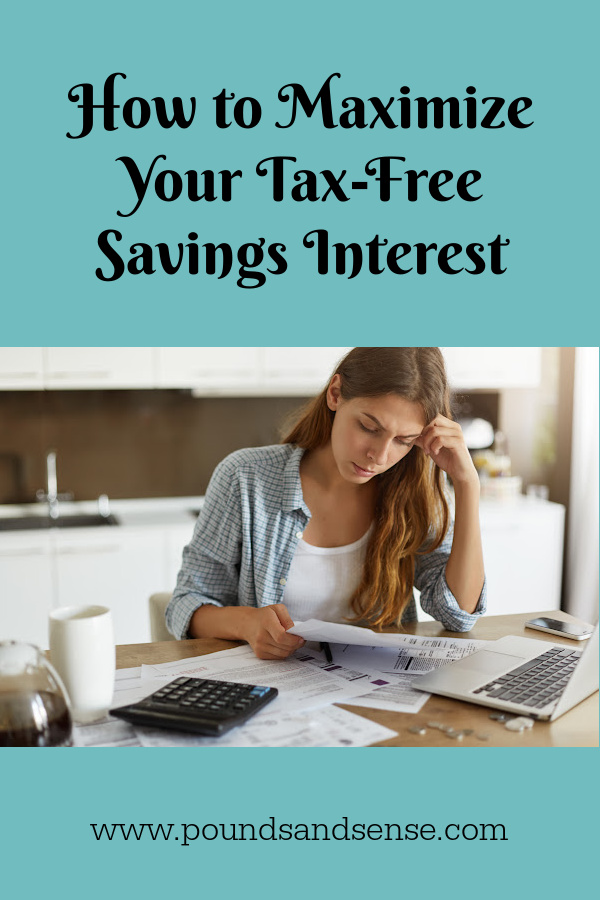How to Maximize Your Tax-Free Savings Interest
In these challenging times, we all need to ensure our savings stretch as far as possible. So today I thought I’d set out the range of tax-free allowances you can use to help do this.
Personal Savings Allowance (PSA)
The Personal Savings Allowance (PSA) was introduced in April 2016 and allows you to earn a certain amount of interest tax-free each year. The amount of your PSA depends on your income tax band:
- Basic Rate Taxpayers (20%): You can earn up to £1,000 in savings interest tax-free.
- Higher Rate Taxpayers (40%): You can earn up to £500 in savings interest tax-free.
- Additional Rate Taxpayers (45%): You do not receive a PSA, meaning all interest earned is taxable.
For example, if you are a basic rate taxpayer and earn £900 in interest from your savings in a tax year, this amount is within your PSA and therefore tax-free. However, if you earn £1,200 in interest, £200 of that will be subject to tax at your marginal rate.
Individual Savings Accounts (ISAs)
ISAs are another powerful tool for earning tax-free interest. There are several types of ISA, with varying annual contribution limits and benefits:
- Cash ISAs: You can save up to £20,000 per year, and the interest earned is entirely tax-free.
- Stocks and Shares ISAs: Also with a £20,000 annual limit, any capital gains or dividends received are tax-free.
- Lifetime ISAs (LISAs): Designed for first-time homebuyers or retirement savings, you can contribute up to £4,000 annually to a LISA, with a 25% government bonus on contributions. The interest earned is tax-free.
- Innovative Finance ISAs (IFISAs): These allow you to earn tax-free interest from peer-to-peer lending within the £20,000 annual limit.
You can mix and match these ISAs and you can now open as many as you like within a single tax year. But the total amount you contribute in a tax year cannot exceed the overall limit of £20,000.
Starting Rate for Savings
For those with a lower overall income, the starting rate for savings can be particularly beneficial. If your total income (excluding savings interest) is less than £17,570, you may qualify for the starting rate for savings, which can provide up to an additional £5,000 in tax-free interest.
Here’s how it works:
- If your non-savings income is below £12,570 (the personal allowance for most people), you can use the full £5,000 starting rate for savings.
- For every £1 your non-savings income exceeds £12,570, your starting rate for savings decreases by £1.
For example, if your non-savings income is £15,000, your PSA is reduced by £15,000 minus £12,570 = £2,430. Subtracting £2,430 from £5,000 leaves £2,570. You can therefore earn up to £2,570 in interest tax-free under the starting rate.
If you qualify for both the starting rate for savings and the PSA, you can earn up to £5,000 in interest tax-free under the starting rate, plus an additional £1,000 (or £500 for higher rate taxpayers) under the PSA. For example, if you’re a basic rate taxpayer with £12,000 in non-savings income, you could potentially earn up to £6,000 in interest tax-free (£5,000 from the starting rate and £1,000 from the PSA). Both allowances can be combined to maximize the amount of interest you can earn tax-free.
Premium Bonds and Other NS&I Products
Premium Bonds and certain other National Savings and Investments (NS&I) products offer tax-free interest or prizes.
Premium Bonds provide a chance to win tax-free prizes each month. While the odds of a big win may be slim, any winnings are tax-free. Similarly, some NS&I savings products, like certain Savings Certificates, offer tax-free interest.
Summing Up
By understanding and utilizing these tax-free allowances, you can maximize the interest you earn on your savings without paying tax. Here’s a quick recap:
- Personal Savings Allowance: Up to £1,000 for basic rate taxpayers, £500 for higher rate taxpayers.
- ISAs: Up to £20,000 per year across various types.
- Starting Rate for Savings: Up to £5,000 if your non-savings income is below £17,570.
- Premium Bonds and Some Other NS&I Products: Tax-free interest and prizes.
Be sure to review your financial situation regularly and consider using these allowances to optimize your savings strategy. By leveraging these benefits, you can grow your savings more effectively and keep more of your hard-won interest.
Finally, this post sums up the situation currently. The new government is looking to raise extra tax revenue any way it can, however, and tax-free savings allowances certainly aren’t immune. Obviously I will update this article (and/or publish a new one) if the rules are changed in future.
As always, if you have any comments or questions about this post, please do leave them below.

